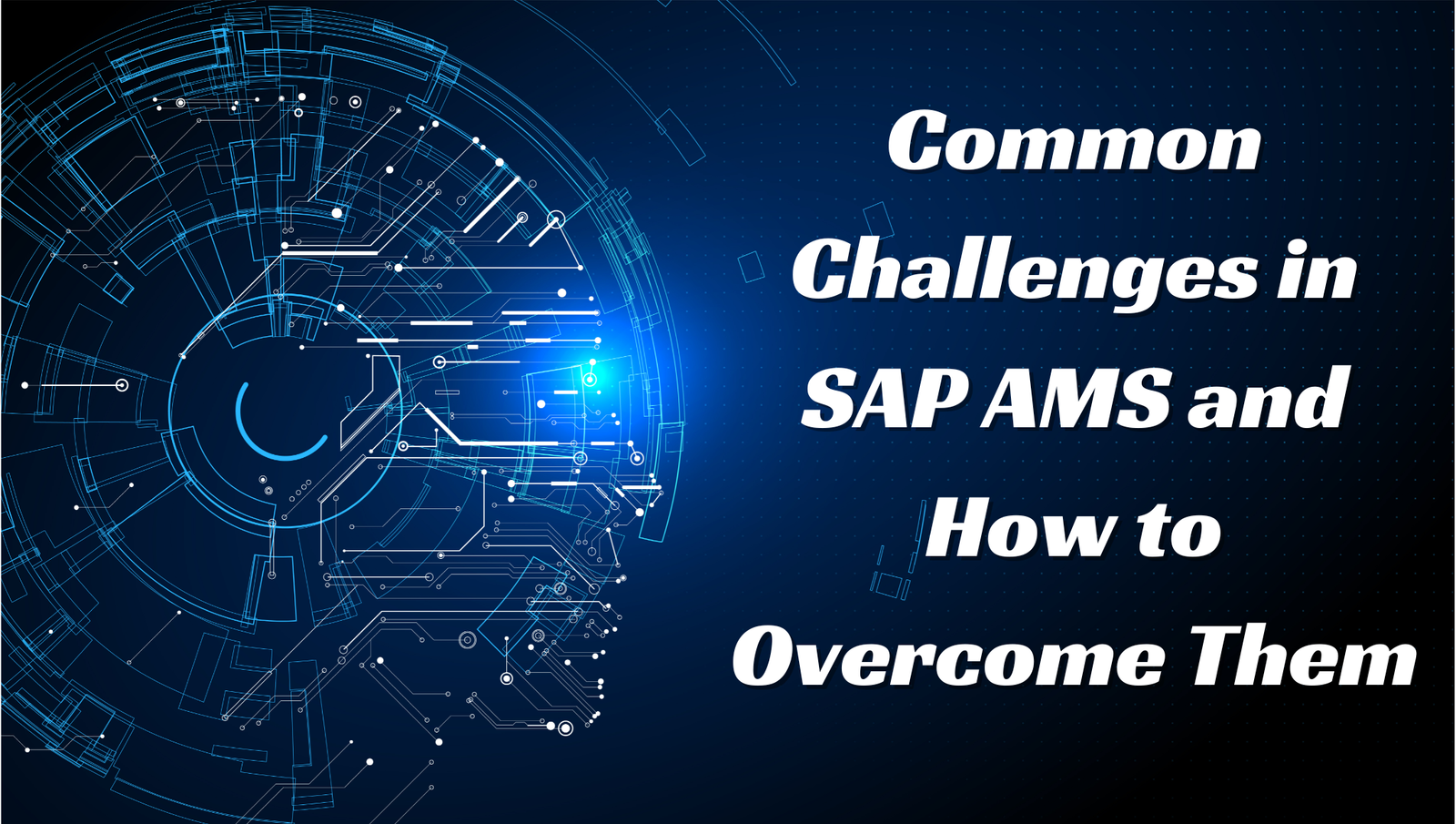Common Challenges in SAP AMS and How to Overcome Them
- 1 10 Challenges in SAP AMS and How to Overcome Them
- 1.1 Complexity of SAP Systems
- 1.2 High Costs
- 1.3 Performance Issues
- 1.4 Security and Compliance
- 1.5 Change Management
- 1.6 Data Management
- 1.7 Integration Issues
- 1.8 User Support and Training
- 1.9 Scalability
- 1.10 Vendor Management
- 1.10.1 Overcoming the Challenge:
- 2 Conclusion:
SAP Application Management Services (AMS) are crucial for smoothly operating and maintaining SAP environments. These services have a unique set of difficulties, even though they provide a lot of advantages. Here, we will explore the common challenges in SAP AMS and discuss practical strategies to overcome them.
10 Challenges in SAP AMS and How to Overcome Them

Complexity of SAP Systems
SAP systems are inherently complex due to their integrated nature and extensive functionality. Managing such systems requires a deep understanding of various SAP modules and their interdependencies.
Overcoming the Challenge:
- Comprehensive Training: Ensure the SAP AMS team is well-trained in all relevant SAP modules. Regular training sessions and certifications can keep the team updated on the latest SAP features and best practices.
- Use of Advanced Tools: Leverage advanced tools and technologies such as SAP Solution Manager to efficiently manage and monitor the SAP environment. These tools can help identify issues before they escalate.
High Costs
The cost associated with maintaining SAP systems can be substantial, encompassing the direct costs of AMS and the indirect costs of potential downtime and inefficiencies.
Overcoming the Challenge:
- Cost Management Strategies: Implement cost management strategies such as optimizing resource allocation and utilizing offshore support centers to reduce expenses.
- Automating Routine Tasks: Automation of routine tasks can significantly reduce operational costs. Tools like SAP Intelligent Robotic Process Automation (RPA) can help automate repetitive tasks.
Performance Issues
SAP systems must operate at peak performance to ensure business continuity. Performance problems might result in a large amount of lost productivity and downtime.
Overcoming the Challenge:
- Regular Performance Monitoring: Implement a robust performance monitoring system to detect and address issues proactively. Tools like SAP HANA Cockpit and SAP Solution Manager can be instrumental.
- Performance Tuning: Regularly perform performance tuning and optimization of SAP applications and databases. This includes optimizing SQL queries, ensuring efficient data indexing, and properly configuring the hardware.
Security and Compliance
Security breaches and non-compliance with regulatory standards can have severe repercussions, including financial losses and damage to reputation.
Overcoming the Challenge:
- Implementing Strong Security Measures: Adopt a multi-layered security approach that includes regular security audits, patch management, and user access controls. Tools like SAP GRC (Governance, Risk, and Compliance) can help manage security and compliance effectively.
- Regular Compliance Audits: Conduct regular compliance audits to ensure the SAP environment meets relevant regulations and standards. This can help identify and address any compliance gaps.
Change Management
Frequent changes and updates to SAP systems can lead to instability and user dissatisfaction if not appropriately managed.
Overcoming the Challenge:
- Structured Change Management Processes: Implement structured change management processes, including thorough testing and validation of changes before deployment. This can help minimize disruptions and ensure smooth transitions.
- Effective Communication: Maintain clear and effective communication with stakeholders regarding changes or updates. This can help manage expectations and reduce resistance to change.
Data Management
Managing the vast amounts of data in SAP systems can be daunting, especially ensuring data accuracy, integrity, and availability.
Overcoming the Challenge:
- Data Governance Framework: Establish a robust framework defining data management policies, procedures, and responsibilities. This can help in ensuring data quality and consistency.
- Regular Data Audits: Conduct regular data audits to identify and rectify inconsistencies or inaccuracies. This can help in maintaining the integrity of the SAP system.
Integration Issues
Integrating SAP systems with other enterprise applications can be challenging due to technological differences, data formats, and protocols.
Overcoming the Challenge:
- Standardizing Integration Processes: Standardize integration processes using middleware solutions such as SAP PI/PO (Process Integration/Process Orchestration). This can help simplify and streamline integration efforts.
- API Management: Utilize APIs (Application Programming Interfaces) to facilitate seamless integration between SAP and other systems. SAP Cloud Platform Integration Suite can help manage APIs and integrations effectively.
User Support and Training
Providing adequate user support and training is essential to ensure that users can effectively utilize SAP systems.
Overcoming the Challenge:
- Comprehensive Training Programs: Develop comprehensive training programs tailored to user roles and responsibilities. This can include hands-on training sessions, e-learning modules, and user manuals.
- 24/7 Support: Establish a 24/7 support system to assist users with issues. This can include a dedicated helpdesk, online support portal, and knowledge base.
Scalability
SAP systems must evolve with their enterprises to handle more data volume and user traffic.
Overcoming the Challenge:
- Scalable Infrastructure: Make an expansion-capable infrastructure investment. It should be scalable. Cloud-based solutions, like SAP HANA Enterprise Cloud, which provides scalable and adaptable resources, are one way to achieve this.
- Capacity Planning: It’s essential to plan for future requirements and ensure the SAP system can grow without experiencing performance deterioration.
Vendor Management
Keeping track of the many SAP AMS vendors can be difficult and time-consuming.
Overcoming the Challenge:
- Centralized Vendor Management: To improve coordination and communication with vendors, set up a centralized vendor management system. This can support prompt problem-solving and timely service delivery.
- SLAs, or service level agreements: Establish precise SLAs with vendors to guarantee responsibility and set expectations. Review and revise these agreements often to take into account evolving company requirements.
Conclusion:
SAP AMS is required for SAP systems to operate effectively. Even though SAP AMS has a lot of drawbacks, these can be successfully avoided by adhering to best practices and using cutting-edge tools and technology. With robust security, well-managed change management, thorough training, and flexible infrastructure, businesses can ensure the smooth operation of their SAP systems and maximize the return on their SAP expenditures.

















